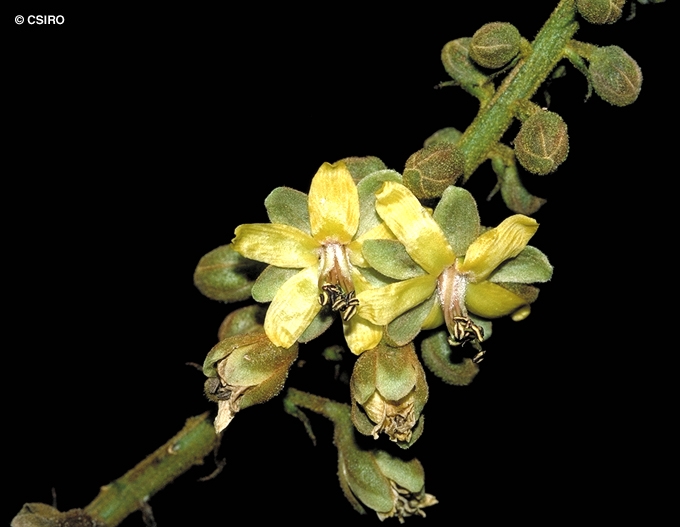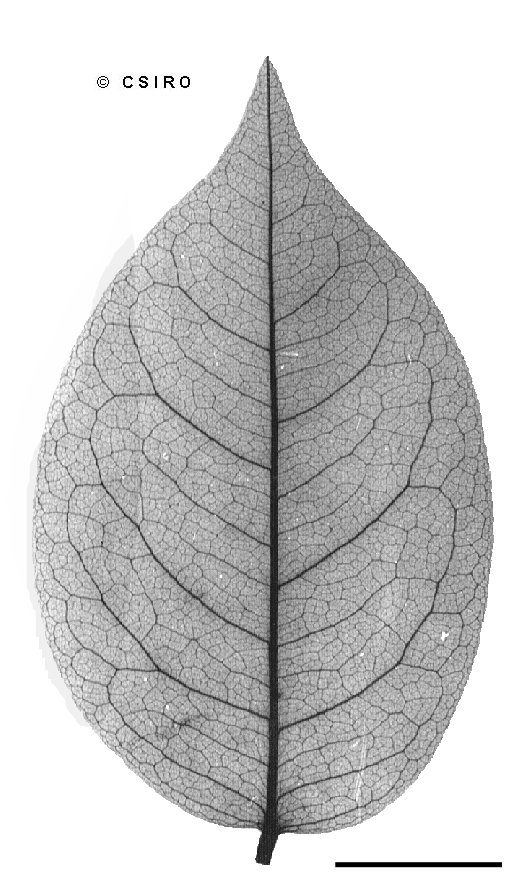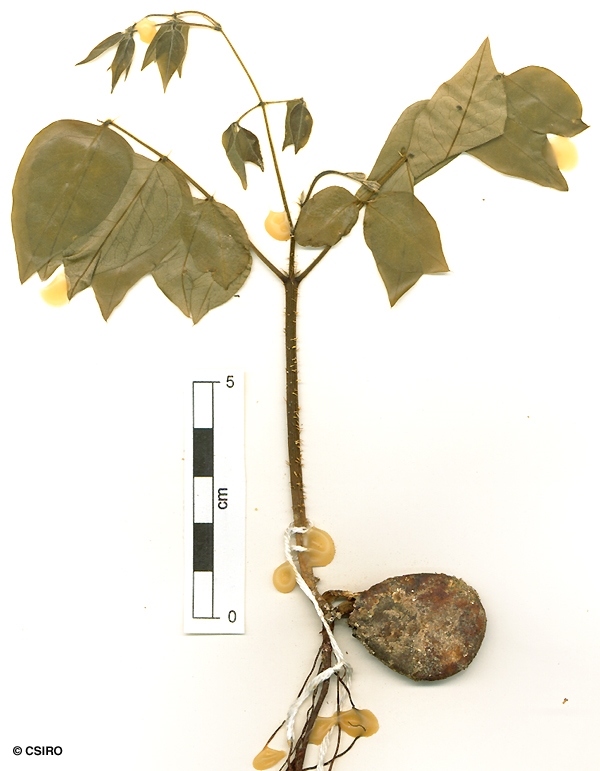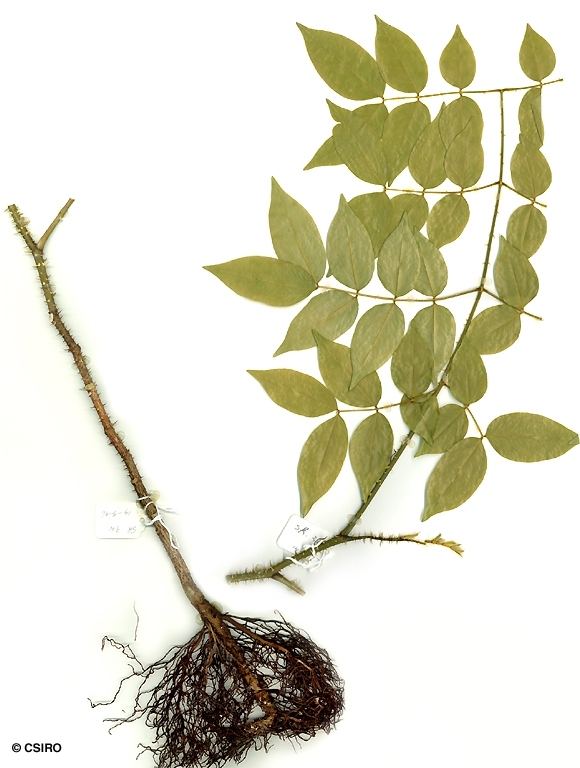Australian Tropical Rainforest Plants - Online edition
Caesalpinia robusta (C.T.White) Pedley







Pedley, L. (1977) Austrobaileya 1(1): 34.
Vine, Giant Mother-in-law; Giant Mother-in-law Vine
Vine stem diameters to 5 cm recorded. Usually grows as a vine but can flower and fruit as a shrub.
Stipules hairy, filiform, about 1-5 mm long. Two stipules produced on either side of the stem, i.e. four per leaf. Stem, petiole, compound leaf primary and secondary axes clothed in recurved (i.e. downturned) curved spines. Leaflets 80 or more per compound leaf, each leaflet blade about 30-55 x 16-24 mm, leaflet stalks about 1-2 mm long. Petiole and compound leaf axes clothed in erect pale brown hairs (upper and lower surfaces). Lateral veins forming loops inside the blade margin.
Inflorescence about 15-25 cm long, supra-axillary, clothed in yellowish or golden hairs and some spines. Male flowers: Pedicels about 5-7 mm long. Calyx tube short, about 2 mm long. Calyx lobes about 7 x 4 mm, densely clothed in short pale yellowish or brown hairs and small globose glands. Hypanthium about 3 mm long. Petals glabrous (except near the base on the inner surface) elliptic, about 8-10 x 4-4.5 mm, apex emarginate. Stamens 10, each about 6-9 mm long, filaments reddish, about 8 mm long, hairy towards the base. Anthers about 1.5 mm long. Pollen yellow. Rudimentary ovary about 1-4 mm long. Female flowers: Pedicels about 6-7 mm long. Calyx lobes about 6 x 3 mm, clothed in short hairs and small globose glands. Petals obovate, about 9-11 x 4 mm. Staminodes 10, filaments hairy towards the base. Ovary fusiform, about 7 x 3-3.5 mm, densely clothed in stiff, spiny, quill-like hairs. Stigma hairy, about 3 mm long.
Fruits flattened, ovate to elliptic-rhomboid in outline, apex curved. Fruits about 7-8.5 x 5-5.5 cm, densely armed with spines about 3-4 mm long. Each spine quite capable of penetrating the skin. Seeds pink or red to purple, obovoid, flattened, about 25-30 x 15-20 mm. Testa thick and hard. Cotyledons much wider and longer than the radicle, cotyledons about 20-27 x 14-17 mm, radicle about 0.5 mm long.
All major plant parts armed with stiff spines, i.e. stems, petioles and compound leaf axes. First and second leaves pinnate with 6-8 leaflets, third leaf bipinnate. Leaflets ovate, upper and lower surfaces clothed in short golden brown hairs. Compound leaf rhachis projecting 2-3 mm beyond the apical pair of leaflets. At the tenth leaf stage: stem clothed in rusty hairs and numerous spines to 5 mm long. Underside of the petiole, primary and secondary compound leaf axes armed with curved spines. Stipules linear, filiform, hairy, about 3-5 mm long. A single straight spine present on the upper surface of the primary compound leaf axis where it is joined by pairs of secondary leaf axes. Terminal buds clothed in pale brown hairs. Seed germination time 31 to 428 days.
This taxon will eventually move to a new genus, probably Ticanto.
Usually a large tree top vine with numerous horn like protrusions along the stem.
The very hard colourful seeds can be found throughout the year and were sometimes used in necklaces.





